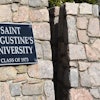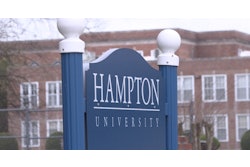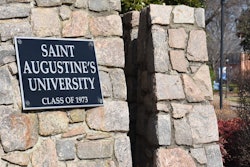WASHINGTON
A year after Hurricane Katrina inflicted lethal damage along the Gulf Coast, the region’s colleges — including historically Black institutions — still face major challenges and need more federal funding, a report says.
The study by congressional Democrats cites widespread enrollment and staff reductions at New Orleans-area colleges, trends that may hamper long-term renewal. At Dillard University, a New Orleans HBCU, enrollment has declined 50 percent, to 1,000 students, from pre-hurricane levels.
Among other HBCUs, enrollment has dropped 25 percent at Xavier University of Louisiana and 17 percent at Southern University-New Orleans.
“Enrollment is down significantly at colleges and universities, a fact that has implications for the entire recovery,” says “Schools After Katrina: A Look at New Orleans Area Schools and Colleges One Year Later.” Following massive devastation a year ago, the environment for colleges is only “at best slightly improved” for Fall 2006.
Facilities and staff are other major concerns. SUNO has no buildings ready to re-open this fall, with classes again relegated to trailers north of campus, the report says.
Xavier has one-third fewer faculty and less than half of the staff who were employed prior to Katrina. Faculty losses can be particularly costly, the report says, since instructors may take research funds with them when moving to another institution.
HBCUs are not the only colleges still struggling after the hurricane. Enrollment at Tulane University is down 24 percent, the study says, and the university lost $17 million in research funding from equipment and facility damage. Delgado Community College, with the highest student population among area colleges, has suffered a 19 percent enrollment decline and continues to rebuild damaged sites.
U.S. Rep. George Miller, D-Calif., whose staff compiled the report, says the findings show a failure of federal leadership.
“It is shameful that the federal government continues to deny schools and colleges in the New Orleans area the help they need to fully recover,” Miller says. “One year later, it is well past time that Congress and the administration finally provided the leadership that children, students and educators in the New Orleans area need and deserve.”
But Bush administration officials touring the region in late August have said government is stepping up aid.
Colleges will be eligible for $50 million in new grants for construction and expense reimbursement approved by Congress. Another $235 million from the Emergency Impact Aid for Displaced Students program will be available to help displaced students.
“With timely and significant federal aid, student loan relief, and furniture and book donations, we are doing everything we can to make sure that schools reopen and children learn,” says U.S. Education Secretary Margaret Spellings.
While visiting the region, Spellings also announced the availability of $60 million in new aid provided by foreign governments. The U.S. received 151 offers of assistance from foreign governments and international organizations.
Of the $60 million, half will go to college and universities and half to K-12 education. The postsecondary funding is open to institutions in Mississippi and Louisiana.
— By Charles Dervarics
|
Reader comments on this story: |
|
There are currently no reader comments on this story. |
© Copyright 2005 by DiverseEducation.com















